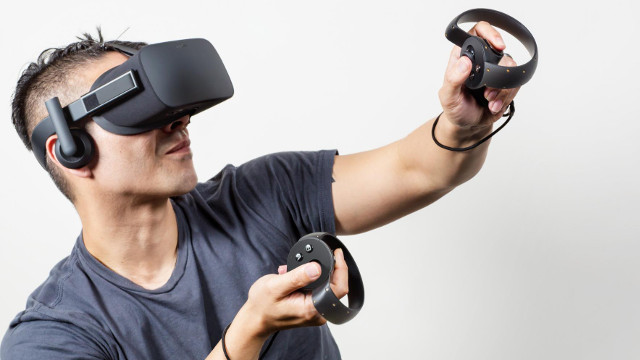The long-awaited debut of high-end gaming VR has finally arrived. Oculus Rift's Consumer Version 1 is now in the hands of consumers, and it has quickly become the most talked about piece of hardware among technology and gaming connoisseurs. Expectedly so, as many have been waiting for proper VR technology since the 1980's.
I've had the chance to use the Oculus Rift CV1 during the past 24 hours, and thought I would share my initial impressions, including the good, the bad, and the ugly.
The Good
Unprecedented immersion. The Oculus Rift teleports you to worlds, convincing the mind and the senses that you're there. Horror games are scarier than ever before, action games are more thrilling, and exploration feels intimate. Virtual reality isn't a gimmick; this is nothing like what the Nintendo 3DS has, it really is a new generation for gaming, and opens the door to experiences that simply couldn't be created before.
Effective ergonomics. It might sound awkward to strap a headset to your face, but it actually feels very natural. The Oculus Rift weight just over a pound, and has meticulously designed straps that balance the weight on the front, top, and back of the head. This is extremely important for longer play sessions.
A strong launch library. More than 50 games designed specifically for VR are already available. Even better, two of the best titles (Lucky's Tale and Eve: Valkyrie) come packaged with the headset for free. A lot of the games are short-lived, but there's enough available that early adopters should feel satisfied for the first couple months post-launch.

Head-tracking is lightning fast. The IR sensors map the location of the headset with remarkable precision as well as unnoticeable delay. If this wasn't as optimized as it is it could have been a deal breaker. Instead, immersion and comfort are close to perfect.
The Oculus Store is well-built. Chance are that, like me, you'd prefer to use Steam, but what Oculus VR has created is actually neat and intuitive. Buying games and hopping between them is seamless, and download speeds have been fast during the launch period. That said, most games can be played through Steam, although you have to opt-in for third-party application support on the device.
Breathable materials. Look, don't be embarrassed, you're going to sweat when using the device. It happens to everyone. Thankfully, the materials that come in contact with the face are thoughtfully crafted for breathability and easy replacement.
The Bad
Field of view isn't optimal. StressLevelZero's BrandonJLa has confirmed that the CV1 has 80h 90v FoV lenses. This is a step down from the DK2, and worse than competing VR headsets (HTC Vive has a 45% larger FoV). It's not a deal-breaker, but it has caused a lot of outrage among technology enthusiasts, and it can certainly be noticed when you move around your eyes within the headset.

It's not a big evolution from the DK2. Not too long ago you could buy a DK2 for around $350, and experience what many considered to be satisfactory VR. Many of us anticipated that the CV1 would make a leap forward in technology in response to feedback during the development phase. Unfortunately, what's here is remarkably similar to the DK2. In-fact, it's almost identical outside of some minor adjustments. If you happen to already have a DK2, you may just want to keep it.
Pricing will keep most consumers at bay. At $600, and requiring a high-end gaming PC, the Oculus Rift requires a huge investment. This alone will prevent many consumers from ever even considering purchasing the device, let along experiencing it, which can and will hurt its ability to be successful. That said, prices are certain to come down over time as manufacturing processes are optimized, and once it hits the $400 price point I can see it performing quite well. assuming that happens sooner rather than later.
The Ugly
Motion sickness hasn't gone away. A lot of consumers are reporting that they feel sick after using the Oculus Rift in certain games, or when using the device for extended periods of time. My friend, who I used the headset with yesterday, couldn't play ADR1FT, a sci-fi game with zero gravity, for more than 10 minutes without feeling sick. The frequency of motion sickness has gotten a lot better since the days of the DK1 thanks to improved software and hardware, but it's still a problem that is already leaving some consumers with a bad impression.

Motion controls are vital. Playing traditional games like Lucky's Tale with an Xbox One controller just doesn't feel quite right. The immersion is very strong, and the mind has difficulty coping with seeing one thing while doing another. Motion controls are an important element of the experience that help to translate real movement into interaction. Oculus Rift could have benefited strongly from including its Oculus Touch controllers, which will debut later this year separate from the core package. The HTC Vive is likely to have a big leg up in this regard.







